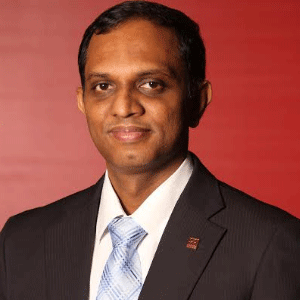THANK YOU FOR SUBSCRIBING

Maz Mirza, Head of Information Technology, MRT Corporation
In public transportation, including the railways, there are many use cases and potential of IoT that has been talked about all over the world. In general, that can be categorized into two categories. First is the use of IoT for transport operators in managing the day-to-day operations, and secondly, for the passengers.
Traditionally in the railway industry, the concept of IoT has been about connected sensors and central collection of data for real-time operations and analysis. But they have been in their own customized or proprietary closed circuit operational technology (OT) system. However, the IoT of today is more about extending the scale and scope of the sensors, data, data accessibility, and applications. To detail, cheaper internet-based communications and rapid expansion of storage, processing power (cloud and on-premise) enabled the extension of scale and scope of sensors and their applications, hence resulting in what today we call as IoT.
By adopting new technologies such as AI/cognitive computing and video intelligence the types of sensors is expanding in the operational eco-system. With it opportunities are also growing in predictive maintenance and in usage of AI-based video surveillance on-board and in stations and depots for safety and security monitoring.
The IoT of today is more of extending the scale and scope of the sensors, data, data accessibility, and applications
IoT also opens up plenty of opportunities and potential for the benefit of the passengers. Some of the key areas for development are live or real-time travel info for passengers, crowd density and movement for passengers, on-premise retailers and facility operators, and on-board train public facility status to name a few.
While there are plenty of opportunities for both the rail operators and the public, there are some key challenges that need to be addressed for successful adoption of IoT and other technologies.
One of the challenges that is common with any new or emerging technology is that while solution providers often preach about the various business values of the solution, the maturity of the business model in the value proposition is still lacking. Often, the approach is still like traditional business – just sell the solution to a customer. What would be of more interest is a partnership model where the solution provider also bears some of the business risks. If the solution provider claims to be the expert in monetizing the data using the technology, then let the railway operator focus what they do best – operating the railway – while the solution provider puts in the investment and focus on making it work in the long run and generate the expected returns. Perhaps the solution provider just needs to provide the railway operator some form of minimum guaranteed annual payment.
The other challenge is on matters concerning cyber security. With the OT network now connected to the internet, the threats or risks also increases dramatically. Keeping the OT environment secured from the various nature of cyber threats, current and future, that can affect performance or uptime is becoming increasingly critical as these systems are typically the mission-critical real-time systems that can impact the safety of human lives. The fundamental issue is that cyber security is not always ingrained or built-in through proper or comprehensive data governance and risk management processes when designing and implementing the solutions. Often, the pressure to deliver a working solution within a tight schedule results in cyber security processes getting lower priority or overlooked in critical areas. Hence, a future-proof secure solution in itself should be important part of the business value proposition.
Weekly Brief
I agree We use cookies on this website to enhance your user experience. By clicking any link on this page you are giving your consent for us to set cookies. More info
Read Also














